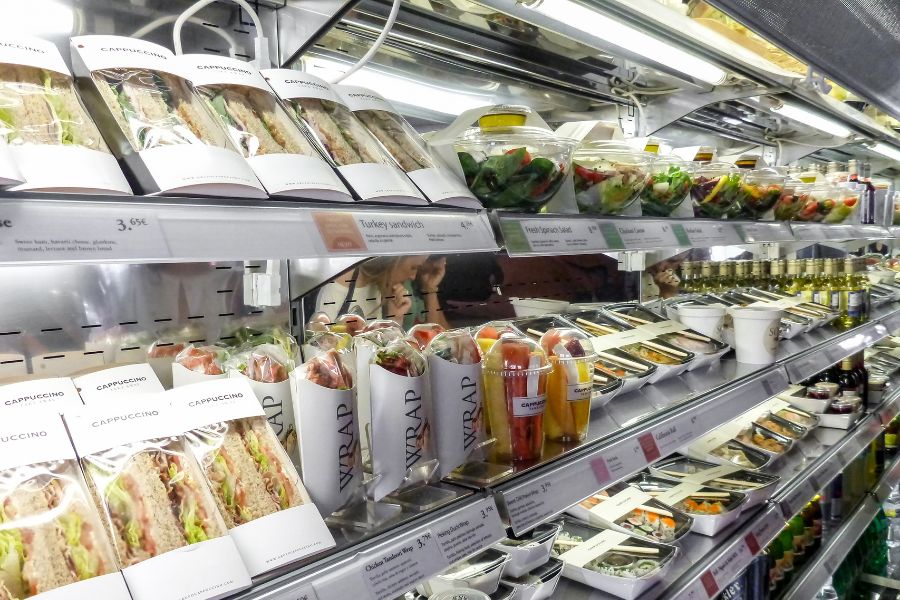Adopting zero-waste food practices is the need of the hour
Food wastage is a major problem in a world where millions go hungry, and incidentally, restaurants are a major source of the problem. Globally, restaurant owners and food experts are coming up with innovative ways to reduce food waste, as the idea of “Zero Waste Food” steadily gains recognition. A zero-waste menu, for example, emphasises using all of the vegetable, fruit, and meat components as well as eco-friendly packaging and flatware.
With the use of efficient methods to prevent, recover from, recycle, and dispose of food waste, the restaurant industry can minimise its negative effects on the environment, economy, and society in addition to enhancing its sustainability, competitiveness, and reputation. Restaurants work hard to prepare meals that can cut down on or even eliminate food waste in the kitchen as well as on the plate. This means making use of every part of the ingredient, from the peel to the core, the root to the stem, and the tail to the nose.

Photo Source: Shutterstock
Reducing food loss and waste has become a must-go approach in modern times. It is not just because of the environmental concerns but also to cut down on food expenses. The concept of Zero Waste Food is gradually becoming a need of the hour across the world, wherein restaurateurs and food connoisseurs are inventing ways to minimize food wastage.
One such initiative is the Zero-Waste menu, a concept which focuses on multiple aspects of sustainability such as eco-friendly cutlery and packaging and the use of every part of vegetable, fruit or meat. Restaurants strive to create a meal that can reduce or completely eradicate food waste both on the plate and in the kitchen. This entails utilising every component of the ingredient—from peel to core, root to stem, and nose to tail. ZW menus also aim to avoid overstocking and overproduction, sourcing locally and seasonally, and composting or giving any leftovers.
Food wastage: A global practice
Did you know that discarded food is one of the major pollutants in the world?
On a global scale, food waste is a problem that has serious negative effects on the environment, society, and economy. It is estimated that 8–10% of the world’s greenhouse gas emissions are related to food waste.
According to the Food Waste Index Report 2021 from the United Nations Environment Programme (UNEP), 1 billion tonnes of food are wasted annually worldwide. A startling one-third of the food produced globally is thrown away or misplaced. According to the UNEP report, food systems reform is important for addressing the global crises of pollution, waste, and nature and biodiversity loss, as well as climate change.
The research collected 152 food waste data points out of 54 countries, and made several observations on food wastage patterns, to possibly propose a food conservation possibility. The report says that food waste by the year 2030 estimates that 931 million tonnes of food, or 17% of all food accessible to consumers in 2019, is estimated to be in the trash cans of homes, merchants, restaurants, and other food services.
Food conservation: Need of the hour
Reducing food waste is essential to achieving Sustainable Development Goal 12, “Ensure Sustainable Consumption and Production Patterns,” which is embodied in Target 12.3: by 2030, cut food waste in half and minimise food loss throughout supply chains.
A third of production is lost or squandered in food systems, which is inconsistent with sustainable consumption and production. This is because high levels of waste have a negative impact on the environment, water resources, biodiversity, food security, and the economy.
Cities have the chance to build on global experience as the human population grows and urbanises in order to decrease greenhouse gas emissions from the production of renewable energy, recover nutrients from food waste, and enhance their overall waste management systems. Its wastage is measured in numerous ways such as during production, processing, distribution, retail and food service sales, and consumption.
A sense of responsibility towards food conservation is becoming more common globally. For example, in 2016, a law was introduced in France requiring retailers to donate edible food to food banks and charitable organisations. Lawbreaking managers face a two-year prison term and heavy fines.
Restaurants focus on food waste
The Waste and Resources Action Programme or WRAP, claims that the food industry generates 4,00,000 tonnes of food waste, which could have been prevented annually. Moreover, it is estimated that food waste costs the restaurant industry an incredible £682 million annually.
In the long term, reducing food waste in restaurants can provide dual benefits; help the environment and save costs for the establishment. There is a common practice amongst restaurants known as overproduction. In order to satisfy consumer demand and prevent stock-outs, restaurants frequently produce more food than is necessary. This results in excess food that cannot be sold or used before it goes bad or expires.
This food waste is a source of pollution and greenhouse gas emissions, as well as a loss of resources like labour, capital, energy, water, and land. It is also a major cause of malnutrition and food insecurity, particularly in developing nations where millions of people live in poverty and hunger. India is faced with the conundrum of producing enough food to feed itself but not enough people, as millions of people lack access to sufficient and nourishing food because of poverty, inequality, inefficiency, and waste.
One of the main causes of food waste in India is the restaurant business. The United Nations Environment Programme (UNEP) released its Food Waste Index Report 2021, which states that 11.9 million of the 68.7 million tonnes of food waste produced annually in India originate from the food service industry. Restaurants, lodging facilities, caterers, canteens, and other businesses that provide food to patrons are included in this industry.
Three categories apply to the food waste produced by this industry: plate waste, which is the result of customers leaving uneaten food on their plates; post-consumer waste, which is the result of customers taking leftover food home but not eating it; and pre-consumer waste, which happens during food preparation and storage.
Countries leading the fight against food wastage
A number of nations are making strides to restrict food wastage. There is a grocery store in Norway that solely sells food waste. A commitment to halve food waste by 2030 has been made by the Norwegian government and the c0untruy’s food sector. They are also launching a range of apps and making technological advancements to assist grocery retailers, customers, and charitable organisations in making sure food is utilised effectively rather than going to waste.
In Denmark, a nonprofit organisation named Stop Spild Af Mad, which translates to “stop food waste,” has been raising awareness, developing powerful campaigns, and pushing for significant changes at every point in the food waste chain. The fact that Denmark currently has more food waste initiatives than any other nation in Europe is evidenced by the sheer volume of these programmes.
A national food bank organisation called Second Harvest exists in Japan. Its mission is to swiftly redistribute edible food that has been retrieved from grocery stores and other retailers to those in need. Additionally, there are programmes to give additional shop points for buying food that is almost best before dates and the recently passed Food Recycling Law, which intends to direct food waste to facilities that turn it into energy, compost, and animal feed.
Food waste is a complex problem in India’s restaurant industry as well, which requires quick thinking and cooperation from all parties involved. India’s No Food Waste project is a prime illustration of the nation’s efforts to reduce food waste. The non-profit, which was established in 2014, feeds the impoverished, elderly, and homeless people by redistributing extra food from big events like weddings. With operations in other cities, including Delhi, Tadepalligudem, Salem, Erode, Coimbatore, and Chennai, the team has re-distributed food to more over two lakh individuals since then.
By using efficient strategies and tactics to avoid, recover, recycle, and dispose of food waste, the restaurant industry can lessen the negative effects it has on the economy, society, and environment while simultaneously enhancing its standing, competitiveness, and sustainability.













Leave a comment